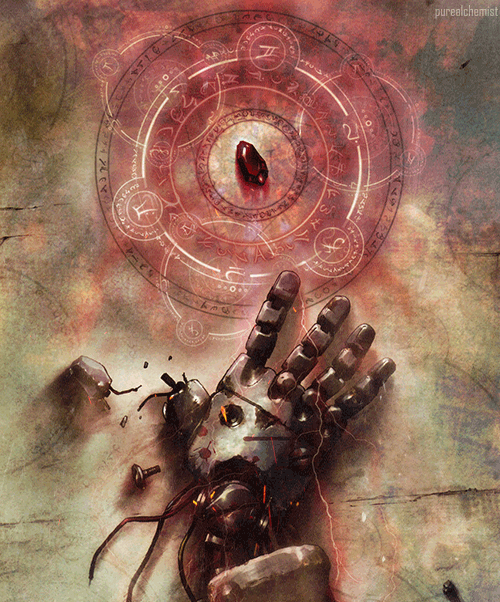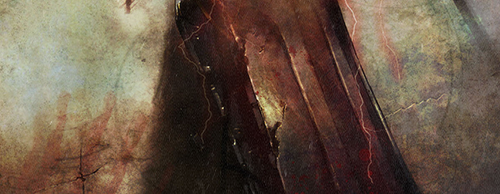How I Feel When I Write Anything In C++

How I feel when I write anything in C++
More Posts from R3ds3rpent and Others
http://www.kurzweilai.net/these-self-propelled-microscopic-carbon-capturing-motors-may-reduce-carbon-dioxide-levels-in-oceans?utm_source=KurzweilAI+Weekly+Newsletter&utm_campaign=aec011d0f7-UA-946742-1&utm_medium=email&utm_term=0_147a5a48c1-aec011d0f7-282055766


Star from the Lizard Constellation Photobombs Hubble Observation
In space, being outshone is an occupational hazard. This NASA/ESA Hubble Space Telescope image captures a galaxy named NGC 7250. Despite being remarkable in its own right — it has bright bursts of star formation and recorded supernova explosions— it blends into the background somewhat thanks to the gloriously bright star hogging the limelight next to it. The bright object seen in this Hubble image is a single and little-studied star named TYC 3203-450-1, located in the constellation of Lacerta (The Lizard). The star is much closer than the much more distant galaxy. Only this way can a normal star outshine an entire galaxy, consisting of billions of stars. Astronomers studying distant objects call these stars “foreground stars” and they are often not very happy about them, as their bright light is contaminating the faint light from the more distant and interesting objects they actually want to study. In this case, TYC 3203-450-1 is million times closer than NGC 7250, which lies more than 45 million light-years away from us. If the star were the same distance from us as NGC 7250, it would hardly be visible in this image. Credit: ESA/Hubble & NASA NASA image use policy. NASA Goddard Space Flight Center enables NASA’s mission through four scientific endeavors: Earth Science, Heliophysics, Solar System Exploration, and Astrophysics. Goddard plays a leading role in NASA’s accomplishments by contributing compelling scientific knowledge to advance the Agency’s mission. Follow us on Twitter Like us on Facebook Find us on Instagram

NASA Confirms Evidence That Liquid Water Flows on Today’s Mars
These dark, narrow, 100 meter-long streaks called recurring slope lineae flowing downhill on Mars are inferred to have been formed by contemporary flowing water. Recently, planetary scientists detected hydrated salts on these slopes at Hale crater, corroborating their original hypothesis that the streaks are indeed formed by liquid water. The blue color seen upslope of the dark streaks are thought not to be related to their formation, but instead are from the presence of the mineral pyroxene. The image is produced by draping an orthorectified (Infrared-Red-Blue/Green(IRB)) false color image (ESP_030570_1440) on a Digital Terrain Model (DTM) of the same site produced by High Resolution Imaging Science Experiment (University of Arizona). Vertical exaggeration is 1.5.
Credits: NASA/JPL/University of Arizona

Excited to start experimenting with this new #adafruit Feather Bluefruit! #arduino IDE compatible #atmega32u4 and Bluetooth LE in one tiny package! by arnie.martin @ http://ift.tt/1J3adFL
Upstatae NY is High above the mean. Not surprised
Here's A Map Of The Most Racist Places In America, According To Google Searches
Here’s A Map Of The Most Racist Places In America, According To Google Searches
Some of you may have wondered where the most racist areas in America are. Are they heavily-Democratic urban areas where the “true racists” don’t realize that racism is over in America (as claimed by the GOP)?
According to a new study published in PLOS ONE, the most racist people in America live in “the rural Northeast and South.”
via PLOS ONE
This map represents data culled by scientist Seth…
View On WordPress

pew pew pew


Sorting algorithms are of great interest because of their obvious applications in computer programs, but also because of their mathematical properties. One question in particular: what is the minimum number of comparisons necessary to sort a list of values? For lists of
Knights that say NI

# ‘tis but a scratch | Python
Dynamic Network Visualization - Wars on Earth over time (1816-2001)
This dynamic network visualization shows a dynamic picture of the global war conflicts between 1816 and 2001. The network relationships indicate which country was in conflict with another country. In the first part of the video the network data was overlayed over a geographic world map to show global reach. The second part shows the pure network layout in 3D. The dynamic network analysis and animations were generated with the software Commetrix (www.commetrix.de) by M.Schulz and R.Hillmann of IKMResearch at TU Berlin.
-
 2envy4yall-blog liked this · 5 years ago
2envy4yall-blog liked this · 5 years ago -
 jbelinchonm-blog liked this · 7 years ago
jbelinchonm-blog liked this · 7 years ago -
 hi-imkai liked this · 7 years ago
hi-imkai liked this · 7 years ago -
 rocketdogkid liked this · 7 years ago
rocketdogkid liked this · 7 years ago -
 yunkiyoshi reblogged this · 7 years ago
yunkiyoshi reblogged this · 7 years ago -
 yunkiyoshi liked this · 7 years ago
yunkiyoshi liked this · 7 years ago -
 star-light-ray liked this · 7 years ago
star-light-ray liked this · 7 years ago -
 sehunniethirst reblogged this · 7 years ago
sehunniethirst reblogged this · 7 years ago -
 sehunniethirst liked this · 7 years ago
sehunniethirst liked this · 7 years ago -
 kenyancoder-blog liked this · 7 years ago
kenyancoder-blog liked this · 7 years ago -
 luisorbus liked this · 7 years ago
luisorbus liked this · 7 years ago -
 tramcakes liked this · 7 years ago
tramcakes liked this · 7 years ago -
 dndmasterwork liked this · 7 years ago
dndmasterwork liked this · 7 years ago -
 the-visible-lesbian liked this · 7 years ago
the-visible-lesbian liked this · 7 years ago -
 gallardovsky liked this · 7 years ago
gallardovsky liked this · 7 years ago -
 roseofsomekind reblogged this · 7 years ago
roseofsomekind reblogged this · 7 years ago -
 roseofsomekind liked this · 7 years ago
roseofsomekind liked this · 7 years ago -
 saule-comme-larbre liked this · 7 years ago
saule-comme-larbre liked this · 7 years ago -
 beyllanelle liked this · 7 years ago
beyllanelle liked this · 7 years ago -
 chancellorofcorgis liked this · 7 years ago
chancellorofcorgis liked this · 7 years ago -
 mensrightsfan-blog reblogged this · 7 years ago
mensrightsfan-blog reblogged this · 7 years ago -
 mensrightsfan-blog liked this · 7 years ago
mensrightsfan-blog liked this · 7 years ago -
 philosophybehindcoding-blog liked this · 7 years ago
philosophybehindcoding-blog liked this · 7 years ago -
 avarenity liked this · 8 years ago
avarenity liked this · 8 years ago -
 youbettergiveup liked this · 8 years ago
youbettergiveup liked this · 8 years ago -
 sminikii liked this · 8 years ago
sminikii liked this · 8 years ago -
 robotechmaster liked this · 8 years ago
robotechmaster liked this · 8 years ago -
 seekerwitch166 liked this · 8 years ago
seekerwitch166 liked this · 8 years ago -
 deactivated1748382194-blog liked this · 8 years ago
deactivated1748382194-blog liked this · 8 years ago -
 corvid-carpediem liked this · 8 years ago
corvid-carpediem liked this · 8 years ago -
 bear-necessitiess liked this · 8 years ago
bear-necessitiess liked this · 8 years ago -
 volcanoesmeltmedown reblogged this · 8 years ago
volcanoesmeltmedown reblogged this · 8 years ago -
 elizbit reblogged this · 8 years ago
elizbit reblogged this · 8 years ago -
 6stronghands liked this · 8 years ago
6stronghands liked this · 8 years ago -
 kyra-ivy liked this · 8 years ago
kyra-ivy liked this · 8 years ago -
 studi0schijt liked this · 8 years ago
studi0schijt liked this · 8 years ago -
 feminismk reblogged this · 8 years ago
feminismk reblogged this · 8 years ago -
 rigelwithafedora liked this · 8 years ago
rigelwithafedora liked this · 8 years ago -
 mischievousnightowl liked this · 8 years ago
mischievousnightowl liked this · 8 years ago -
 deia-qwerty-blog liked this · 8 years ago
deia-qwerty-blog liked this · 8 years ago -
 lilyreadsabook-blog liked this · 8 years ago
lilyreadsabook-blog liked this · 8 years ago -
 mknmgc liked this · 8 years ago
mknmgc liked this · 8 years ago
Machine Learning, Big Data, Code, R, Python, Arduino, Electronics, robotics, Zen, Native spirituality and few other matters.
107 posts